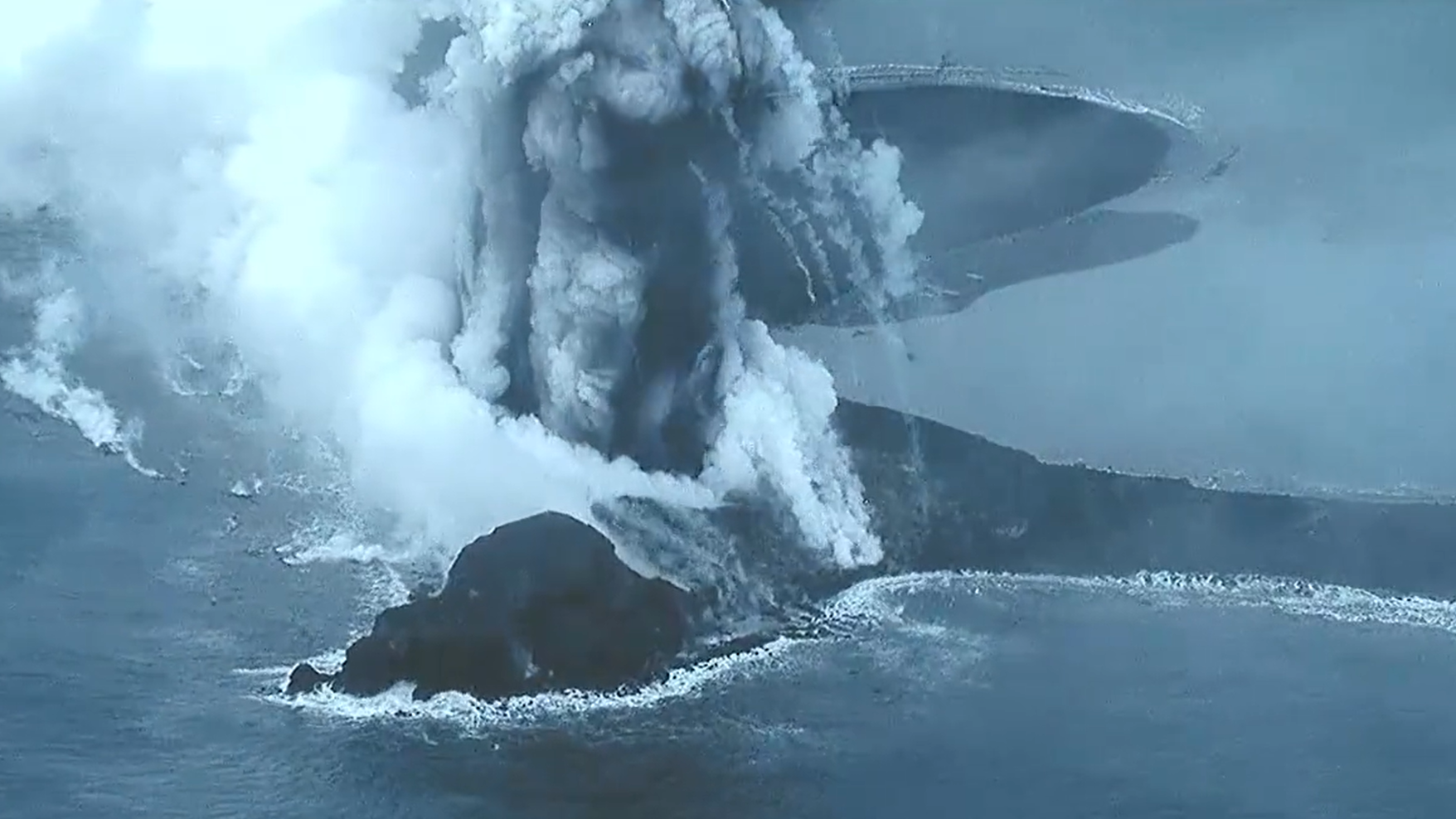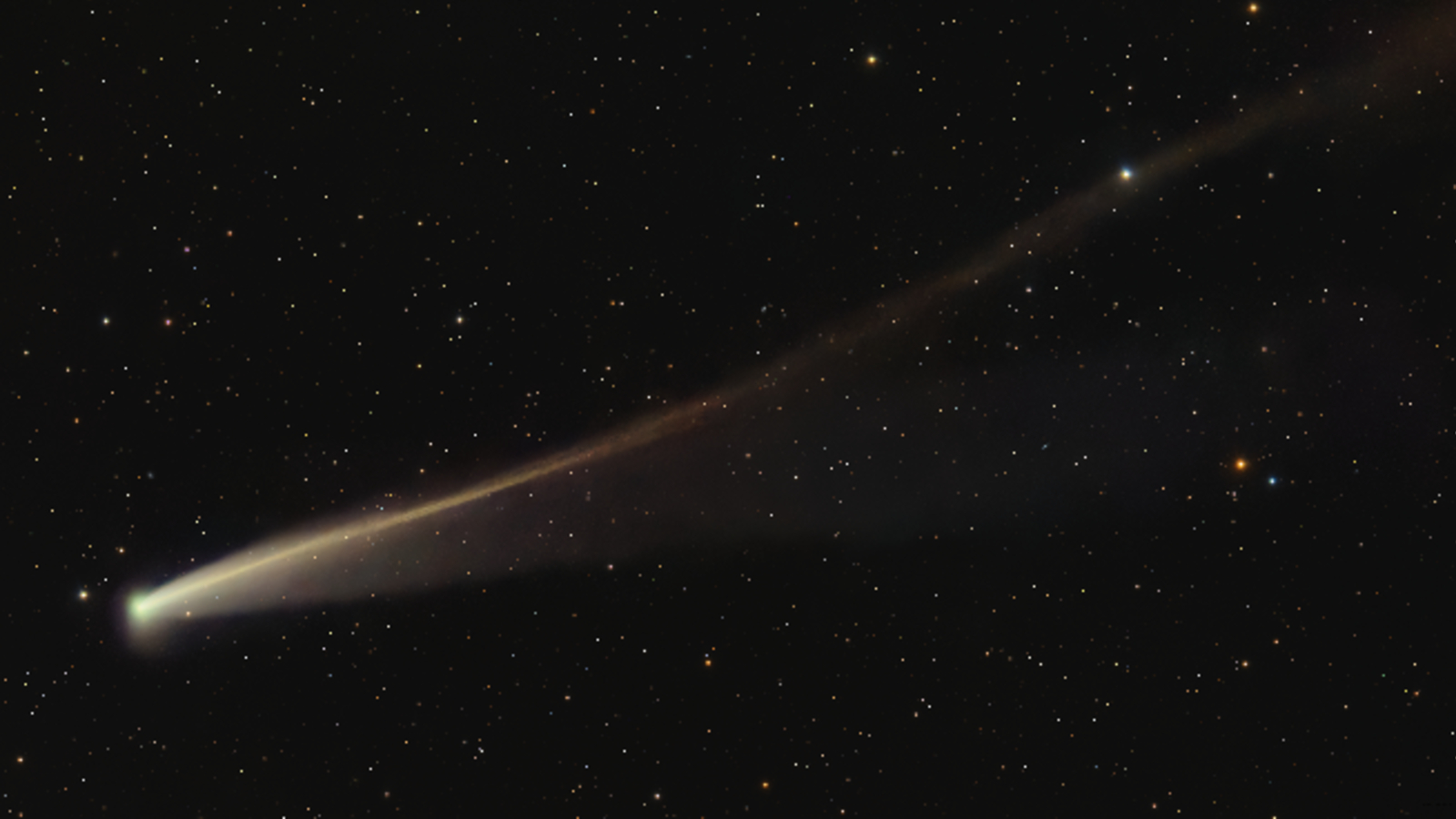Japan's new volcanic island has erupted again — and the dramatic explosion was caught on camera
An underwater volcano that gave birth to a new island off Japan's Iwo Jima island has erupted again, sending huge plumes of ash and smoke into the sky in footage released by Japan's Coast Guard.
An underwater volcano that recently gave birth to a new island in the Pacific has erupted again, sending plumes of ash and smoke into the sky, footage released by the Japan Coast Guard shows.
The volcano, which sits off the coast of Japan's Iwo Jima island in the southern part of the Izu-Ogasawara arc, previously erupted on Oct. 21. Activity ramped up over the following days, and by Oct. 30, explosions were being recorded every few minutes. Each blast flung rocks and ash into a growing pile 0.6 mile (1 kilometer) off the island's coast, eventually forming a volcanic outcrop named Niijima, meaning "new island" in Japanese.
Niijima is now visible from space, satellite images taken by the European Space Agency on Nov. 3 revealed. The new landmass measures 330 feet (100 meters) across, and its highest point is 66 feet (20 m) above sea level. The October eruptions eventually subsided, and scientists said that waves may soon erode Niijima away.
Related: Seamount twice the size of world's tallest building discovered 'hidden under the waves'
But a new eruption has rocked the baby island, the Japan Coast Guard announced on Nov. 27. "As a result of observation, eruptive activity was detected on Niijima off the coast of Okinahama on the south coast of Iwo Jima," representatives said in a translated post on X, formerly known as Twitter.
The eruption, which occurred on Nov. 23, sent ash and smoke soaring up to 660 feet (200 m) into the sky. Aerial footage shows a huge explosion of volcanic material, with rocks and other debris showering down into the sea from a dark plume. Wind appears to be blowing the smoke and ash in one direction as waves lap at the island's shore.
The recent eruptions indicate that volcanic activity is resuming in waters around Iwo Jima after a short period of quiet following an eruption in July 2022. It is unclear how the latest eruption will affect the survival of the newly formed island of Niijima. But whether the island remains intact also depends on the type of rock it is made of, experts told the AP: if it is made of lava, there is a chance Niijima could stick around.
Get the world’s most fascinating discoveries delivered straight to your inbox.
Iwo Jima and Niijima sit atop a string of underwater volcanoes that line the circum-Pacific Ring of Fire, a horseshoe-shaped tectonic boundary where the Pacific plate joins up with many other plates.
The Ring of Fire — which runs from the southern tip of South America, along North America's west coast, across the Bering Strait, down through Japan and all the way to New Zealand — is the most seismically and volcanically active zone in the world.

Sascha is a U.K.-based staff writer at Live Science. She holds a bachelor’s degree in biology from the University of Southampton in England and a master’s degree in science communication from Imperial College London. Her work has appeared in The Guardian and the health website Zoe. Besides writing, she enjoys playing tennis, bread-making and browsing second-hand shops for hidden gems.

